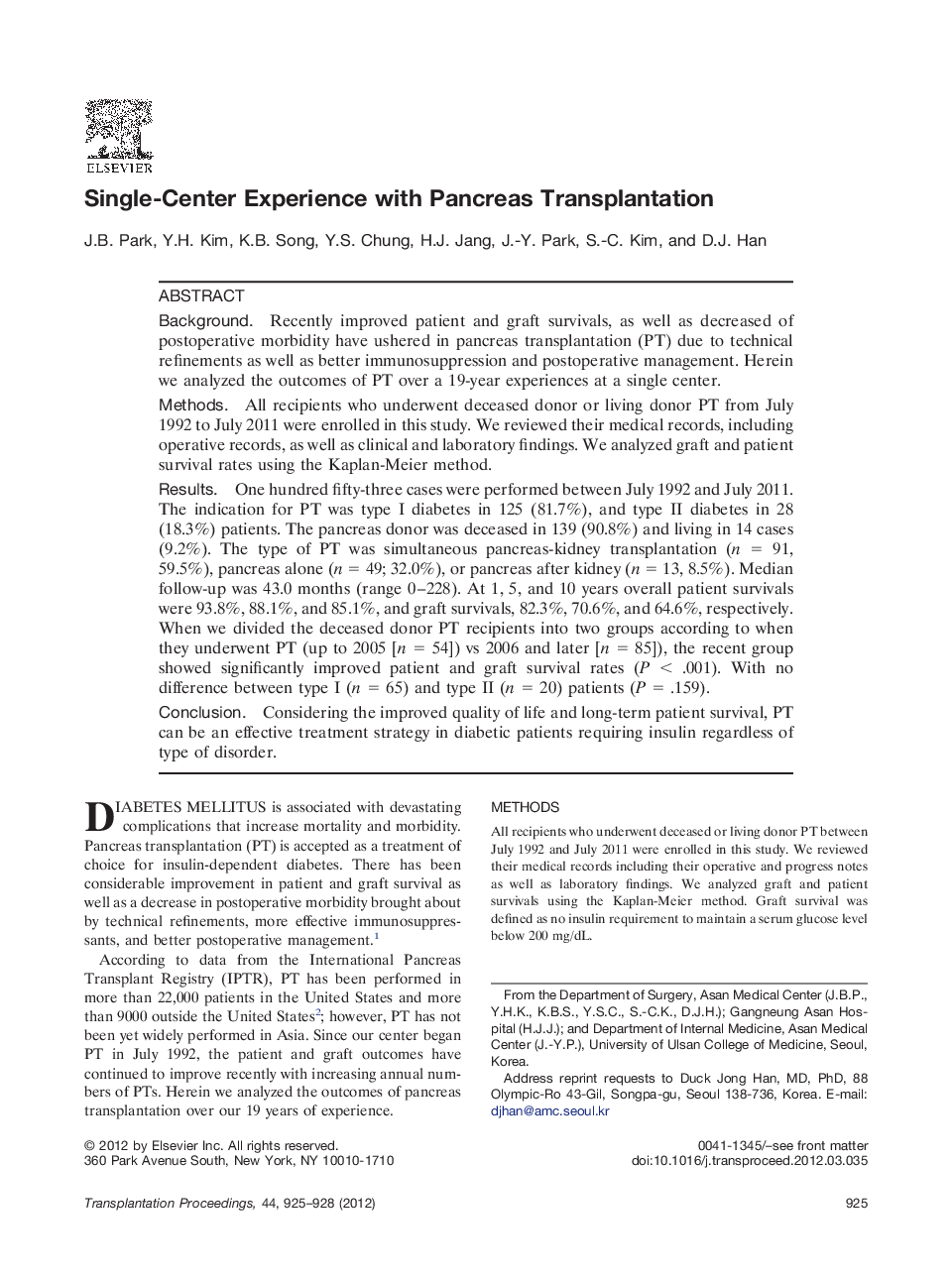| Article ID | Journal | Published Year | Pages | File Type |
|---|---|---|---|---|
| 4256825 | Transplantation Proceedings | 2012 | 4 Pages |
BackgroundRecently improved patient and graft survivals, as well as decreased of postoperative morbidity have ushered in pancreas transplantation (PT) due to technical refinements as well as better immunosuppression and postoperative management. Herein we analyzed the outcomes of PT over a 19-year experiences at a single center.MethodsAll recipients who underwent deceased donor or living donor PT from July 1992 to July 2011 were enrolled in this study. We reviewed their medical records, including operative records, as well as clinical and laboratory findings. We analyzed graft and patient survival rates using the Kaplan-Meier method.ResultsOne hundred fifty-three cases were performed between July 1992 and July 2011. The indication for PT was type I diabetes in 125 (81.7%), and type II diabetes in 28 (18.3%) patients. The pancreas donor was deceased in 139 (90.8%) and living in 14 cases (9.2%). The type of PT was simultaneous pancreas-kidney transplantation (n = 91, 59.5%), pancreas alone (n = 49; 32.0%), or pancreas after kidney (n = 13, 8.5%). Median follow-up was 43.0 months (range 0–228). At 1, 5, and 10 years overall patient survivals were 93.8%, 88.1%, and 85.1%, and graft survivals, 82.3%, 70.6%, and 64.6%, respectively. When we divided the deceased donor PT recipients into two groups according to when they underwent PT (up to 2005 [n = 54]) vs 2006 and later [n = 85]), the recent group showed significantly improved patient and graft survival rates (P < .001). With no difference between type I (n = 65) and type II (n = 20) patients (P = .159).ConclusionConsidering the improved quality of life and long-term patient survival, PT can be an effective treatment strategy in diabetic patients requiring insulin regardless of type of disorder.
